Color Colour Color !
Apr 28, 2023My appreciation and awareness of colour continues to expand exponentially. Though spring came late to my hilltop home in New Jersey, it is making up for its delay by being the most beautiful spring that I can remember experiencing in New jersey. It's possibly even more stunning that the spring I experienced a couple of years ago in Wales where I wandered the Brecan Beacons in absolute awe of the abundance of blossoms on the wild fruit trees, walked through carpets of bluebells became intoxicated by the lovely scent of wild garlic. The beauty of this spring has been a common topic of conversation this past week. Everyone has a slightly different opinion as to why it is taking the breath away from so many of us.
Will I share a photo with you? No. Capturing even a tiny bit of it's beauty has proven as difficult as it was to capture the experience of the blanket of daffodils that covered the forest floor in Wales a month ago. Instead, I'll ramble on about making lake pigments, colour mapping the spring flowers and exploring new combinations of colour to expand my colour-sense even more.
As many of you know, I began dyeing fabrics several years ago making dye baths from foraged plants. For the last year and a half I've experimented with making my own lake pigments from foraged plants, even going to far as to create lake pigments in my little flat in Paris on a small hot plate in a closet kitchen. My greatest frustration has been watching beautiful violets and reds turn to sickly greens and grays as the neutral ph for proper laking is reached. I end up with a huge amount of less than lovely coloured lake pigment. I rarely, if ever, use green pigmented watercolour. I mix my own greens. Making my own green pigments was not at all one of my goals, even as lovely as some of them are when they remain yellow green rather than army green.

Recently, when asked to make room in the freezer for some actual food rather than bags of frozen petals, avocado pits, skins and leaves of all sorts, I pulled out three bags of red petals, mostly red roses and poinsettias with a mix of red petals from deadheading plants in a greenhouse. A few leaves of some sort were also in one of the bags. I brewed three different bowls of dye bath, one with only red rose petals, one with poinsettia blossoms and poinsettia leaves and one with everything else.
My method is as follows: I pour boiling water over the plant material and let it steep overnight. In the morning, I put the stainless steel bowls on the stove, add a 10% solution of alum into the bowls an simmer the liquid with the plant material for about an hour. I then remove all the plant material by straining several times through an old cotton t-shirt, squeezing all the liquid I can from the plant material. Then I process each of the stainless steel bowls of dye bath separately.
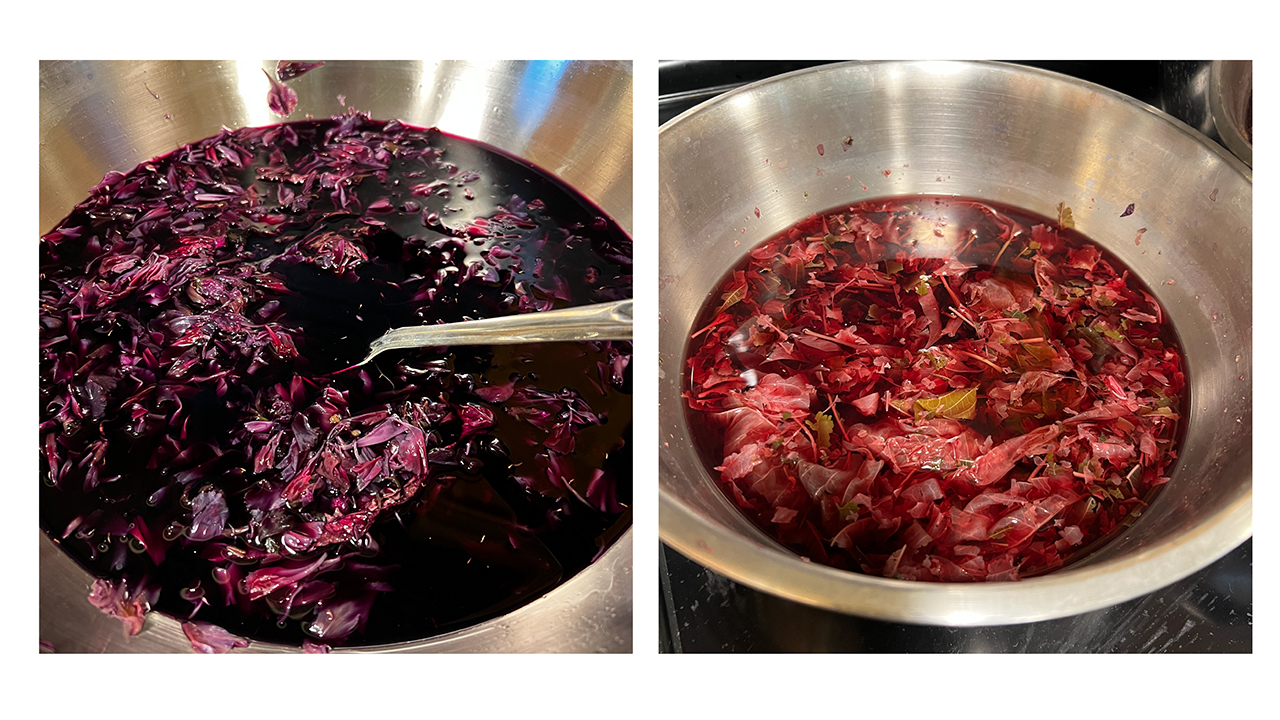
Left: red rose petals. Right: pointsettia petals and leaves
Having had the sad experience of watching my lovely violets turn green as I added enough washing soda solution for my dye bath to reach neutral ph of 7, I decided to break the rules and stop adding the washing soda soon after the wonderful foaming action began in my dye bath, and definitely before the foam began to take on a slightly green tinge. The Ph had only reach a level of 4 when I stopped adding washing soda to my first dye bath, the darkest bath from the red rose petals. Fortunately, slight laking had occurred. The result was a very small amount (about 2 inches) of lake pigment, settled to the bottom of the jar, ultimately, a small amount of extremely dark, violet-black pigment.
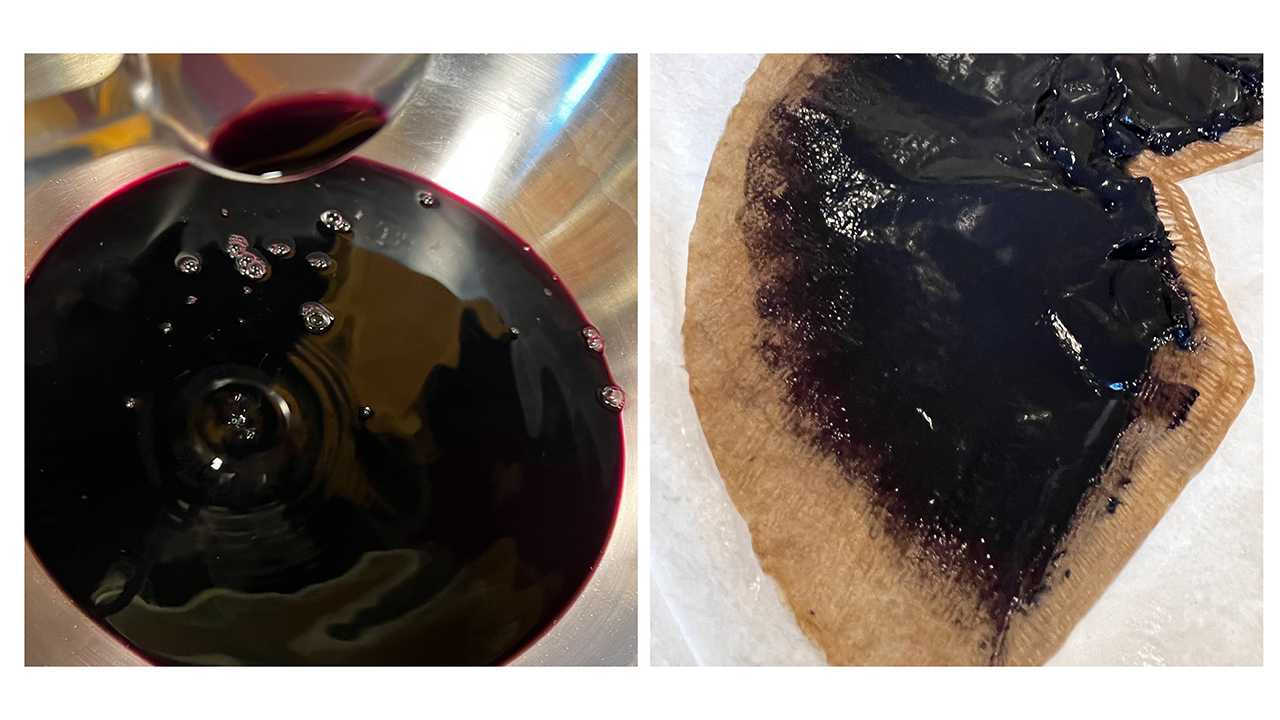
The bonus was that there remained, in the filtered liquid, a great deal of dye molecules available for many more of these abbreviated laking batches. Ultimately, I achieved at least five distinct shades of violet pigment, all of which I stopped prior to reaching the neutral ph of 7.
From the poinsettia petals and leaves I achieved similar success that leaned more to the red violets than the blue violets, still stopping the addition of washing soda solution prior to reaching a ph of 7.
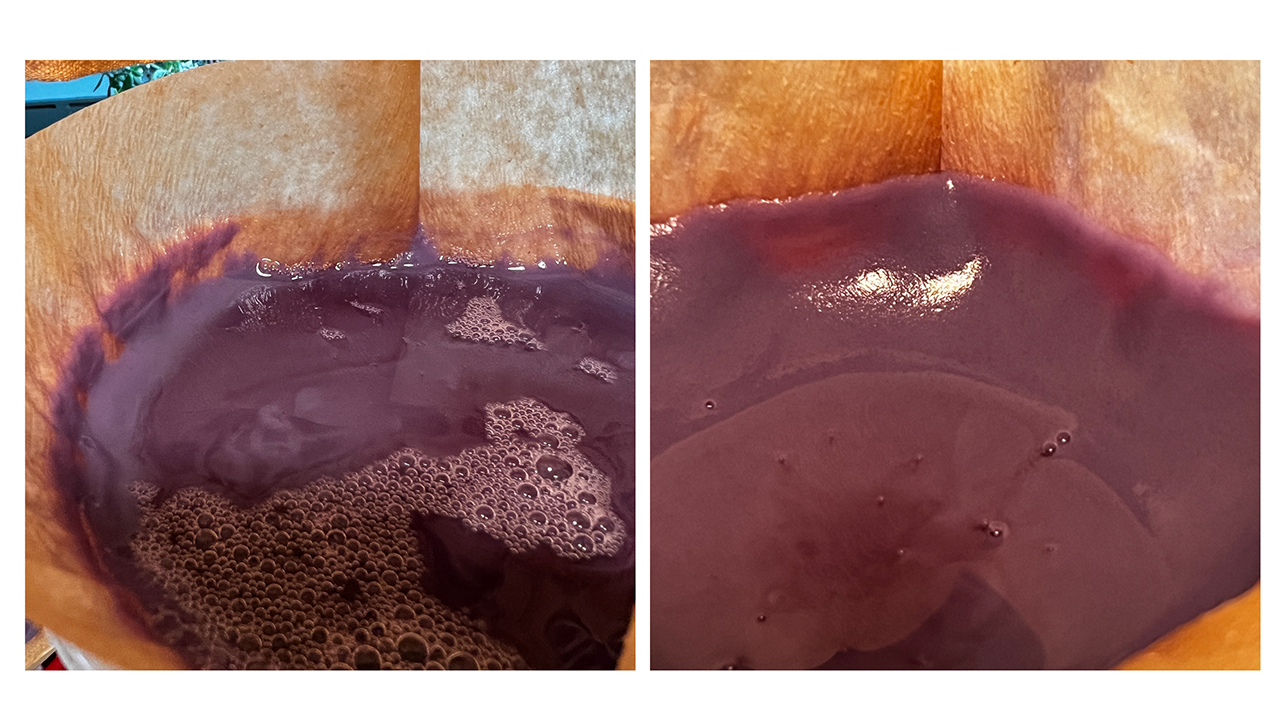 Left: Blue-violet from red rose petals. Right: Red-violet from poinsettia petals and leaves
Left: Blue-violet from red rose petals. Right: Red-violet from poinsettia petals and leaves
The final batch of assorted petals and green leaves produced such a weak rose tint of dye bath that even when I didn't allow it to reach the neutral ph of 7, it produced a green pigment. I was able to achieve a very dark green, with which I was pleased.
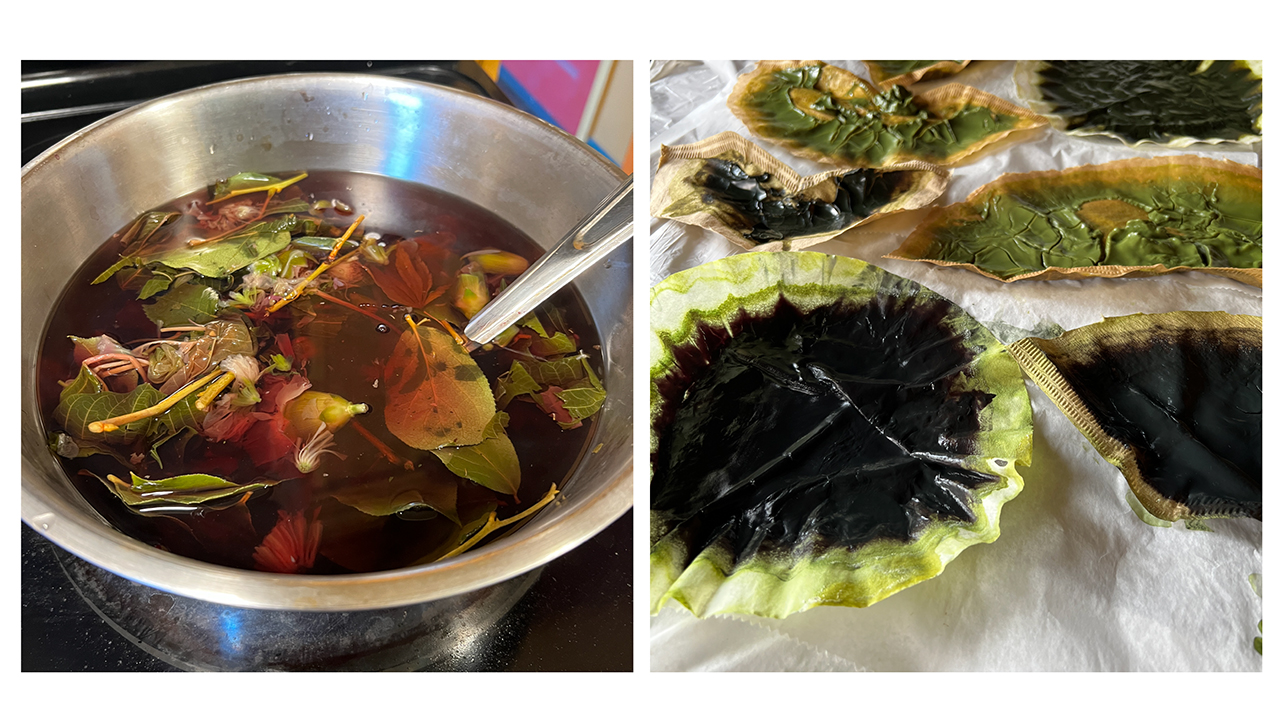
With each new laking process, using the same dye baths over and over again, I ended up with over a dozen different coloured pigments, ranging from a pale gray through multiple variations of greens, rosy tints and violets all the way to a dark violet black.
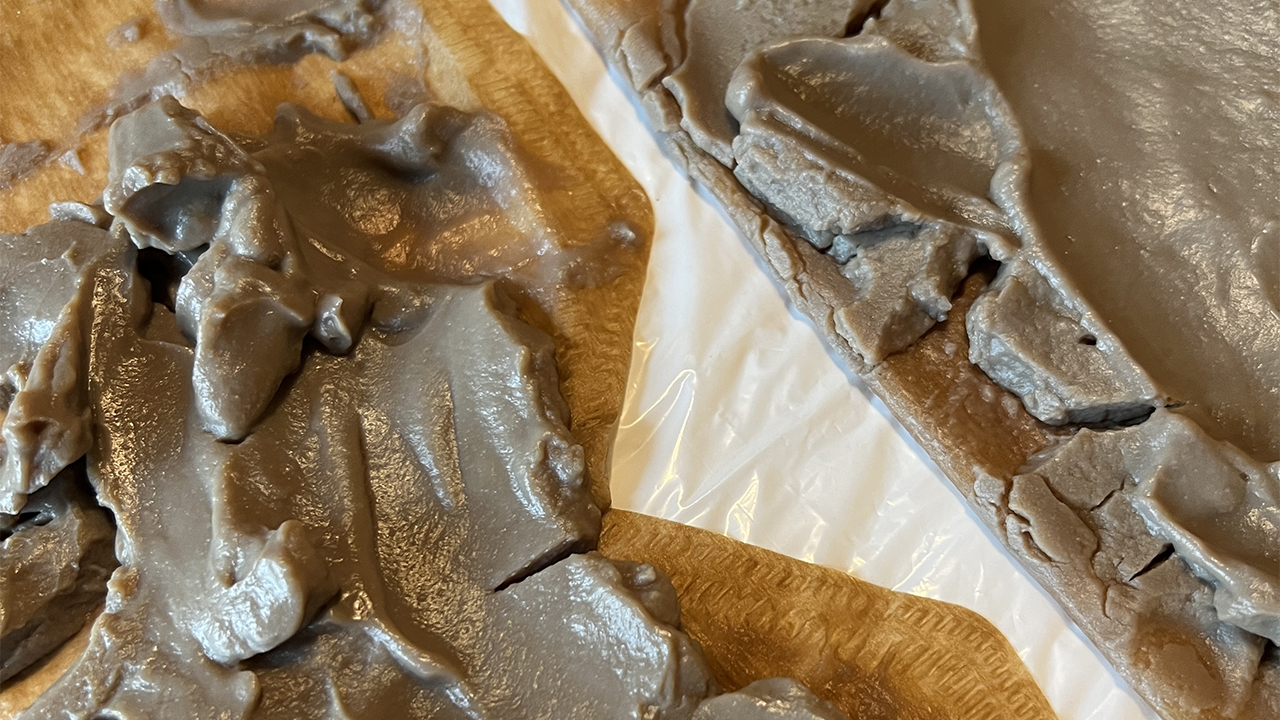

I was on a roll. I pulled a couple of bags of avocado pits and skins from the freezer, excited to achieve a pre-ph7, lovely peach coloured lake pigment. I'm sadly disappointed. I ended up with something so dreadful that I continued to add washing soda solution until I reached that perfect ph7, less than lovely green. It's the colour of an over-ripe avocado.

The real test will be when I grind the pigments finely into powders and mull them into watercolour pigments. In spite of the dreariness of some of the pigments, I'm surprised at my optimism. I look forward to becoming attuned to some truly amazing nuances of neutral colour palettes that act as supporting actors for accents of saturated colour that becomes the focal point of an image. I think back to the fairy tale of the ugly duckly that becomes the elegant and beautiful swan.
Back to the thoughts of spring palettes. the catkins are holding onto the thin branches of the trees and creating an orange tone that is an unusual addition to the spring landscape. The early, mid and late tree budding is happening simultaneously, creating a spectacular variation of pointalism on the tree-covered hillsides, accentuated with lingering, brilliant dashes of flowering redbud and screaming violets of flowering plum. For a week now, I often feel as if I'm walking into a John Singer Sargent painting inspired by a spring fruit tree blossoming in springtime. Perhaps this is the reality of a truly magnificent spring or maybe it is the welcome vision of the crone I have become. Either way, I welcome it and allow myself to be saturated in its beauty.
Tomorrow I'm hoping to wander down the road to the ancient lilac bush that is now in full bloom. I'll make another entry into my Perpetual Plant Journal and share it with you at some point, perhaps just on Instagram, perhaps here on a blog post.
I'm focusing now not only on the next stage of my PAC series, but also on the next chapter in the adventure of my life, preparing for my upcoming hip replacement and sensibly regaining my strength to hike through the Pyrenees with my son and my fabulous new daughter-in-law (who are marrying there in late September of this year) and my daughters with their partners. I had wanted to paraglide in the Pyrenees, but that will have to wait for another year when my new hip is a bit more stable. Maybe next year!
So much to look forward to. So much to learn, to share, to discover. My curiosity is my driving force. My hope is that you might allow me the opportunity to nurture your curiosity. You will explore in your own, different directions. I hope you will share your discoveries with me.
Thank you for reading my blog. Happy sketching, drawing, painting and simply observing.
Chris Carter

Subscribe
Join my mailing list to receive notification of new blog posts and update on the online courses.
Don't worry, your information will not be shared.
We hate SPAM. We will never sell your information, for any reason.
